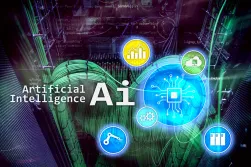Global semiconductor revenues are estimated to double from 2024 to 2030 to reach over $1 trillion, according to Counterpoint Research. The growth will be driven by AI transformation to build infrastructure and consumption endpoints for GenAI to Agentic AI to Physical AI applications.
The primary catalyst will be the development of advanced AI server infrastructure, driven by sustained and potentially rapid growth in demand for forthcoming AI applications. Most of this is currently coming from hyperscalers in both the short and longer term, supporting GenAI’s path to maturity across text and, increasingly, audio and visual in the near term and Physical AI in the longer term.
"We are witnessing the rise of ‘token economy,’ as the token becomes the new AI currency," said Neil Shah, VP of Research at Counterpoint Research. "The first phase of infrastructure rollout drove an increase in token consumption as the market moved from basic text-based applications to richer, multi-modal GenAI combining text, image, audio, and video. The ongoing second phase is supporting an exponential increase in token generation for Agentic AI applications – from complex conversational AI and semantic search to fully integrated multimedia content creation. This wave will demand significant compute, memory, and networking capabilities, both in the cloud and at the edge, and the impact on semiconductor consumption cannot be overstated. The third wave will support the advent of Physical AI, enabling the rise of autonomous machines such as humanoids, industrial robots, and vehicles. This is tremendous news for the semiconductor industry, which has been laying the foundation to enable advanced AI at scale and transform lives, industries, and economies."
Currently, the bulk of AI value sits with semiconductors such as hyperscalers, Tier-2 cloud players, and enterprises rushing to build out AI infrastructure. From GPUs and accelerators to memory (HBM, DDR) and optical interconnects, chips are the backbone of the AI economy, powering everything from cloud platforms, models, and frameworks to applications.
"In 2024, the AI market was predominantly hardware-driven, with about 80% of direct revenues coming from semiconductors for infrastructure and edge. However, that is changing," stated Mohit Agarwal, Research Director at Counterpoint Research. "We are entering a new phase powered by the AI token economy, which will foster an ecosystem of applications and services similar to the mobile app economy's growth over the last decade. While the timeline for broad monetization will depend on individual and enterprise adoption rates, the immediate opportunity for value creation is clear. The most significant value to be unlocked by this next wave of AI will be substantial operational cost savings, achieved through both workforce productivity gains and widespread automation. This should help alleviate concerns about the formation of an AI monetization bubble."



















